Chapter 20 DEFINITE INTEGRALS
Class 12th Maths R D Sharma Solution
Access RD Sharma Solutions for Class 12 Maths Chapter 20 Exercise 1
EXERCISE 20.1
Question. 1
Solution:
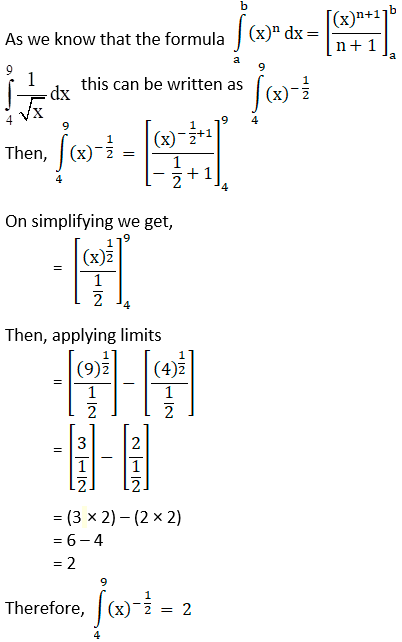
Question. 2
Solution:
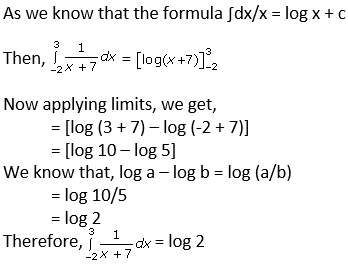
Question. 3
Solution:
Let us assume that x = sin θ,
dx = cos θ dθ
Then, substitute x = 0
θ = 0
Again substitute x = ½
θ = π/6
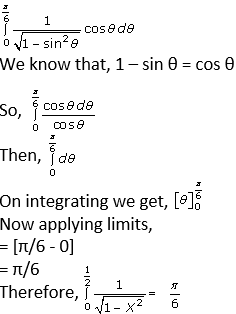
Question. 4
Solution:
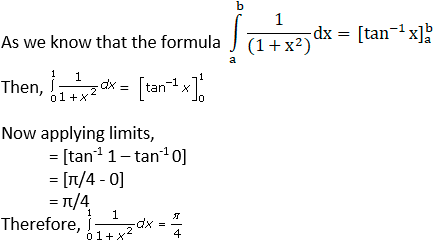
Question. 5
Solution:
Let us assume that x2 + 1 = t
Then, 2x dx = dt
x dx = dt/2
Now substitute x = 2
t = 5
Again substitute x = 3
t = 10
Then,
Access RD Sharma Solutions for Class 12 Maths Chapter 20 Exercise 2
EXERCISE 20.2
Question. 1
Solution:
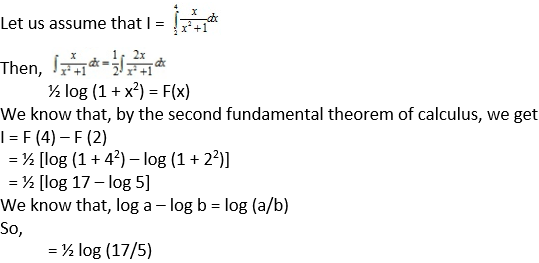
Question. 2
Solution:
Let us assume 1 + log x = t
Then differentiating w.r.t. x, we get
(1/x) dx = dt
Now substitute x = 1
t = 1
Again substitute x = 2
t = 1 + log 2
Then given question becomes,
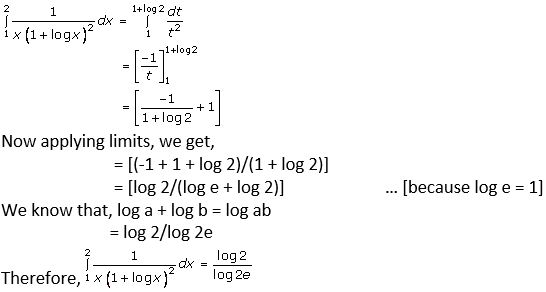
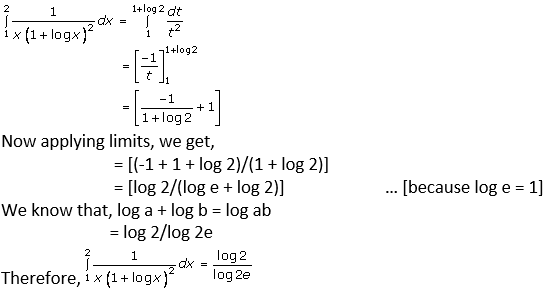
Question. 3
Solution:
Let us assume that 9x2 – 1 = t
Then, differentiating w.r.t. x, we get,
18x dx = dt
Dividing both sides by 6, we get
3x dx = dt/6
So, substitute x = 1
t = 8
Again substitute x = 2
t = 35
Then, the given question becomes,
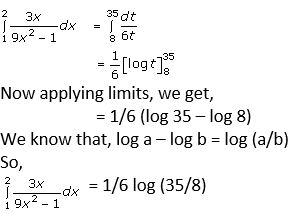
Question. 6
Solution:
Let us assume that, ex = t
Then, differentiating w.r.t. x, we get,
ex dx = dt
So, substitute x = 0
t = 1
Again substitute x = 1
t = e
Then, the given question becomes,
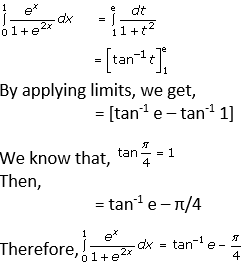
Question. 7
Solution:
Let us assume that x2 = t
Then, differentiating w.r.t. x, we get,
2x dx = dt
So, substitute x = 0
t = 0
Again substitute x = 1
t = 1
Then, the given question becomes,
Access RD Sharma Solutions for Class 12 Maths Chapter 20 Exercise 3
EXERCISE 20.3
Question. 1(i)
Solution:
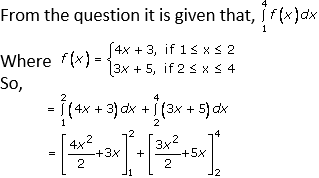
Then, applying limits, we get,
= [((16/2) + 6) – ((4/2) + 3)] + [((48/2) + 20) – ((12/2) + 10)]
= [(8 + 6) – (2 + 3)] + [(24 + 20) – (6 + 10)]
= [14 -5] + [44 – 16]
= 9 + 28
= 37
Question. 1(ii)
Solution:
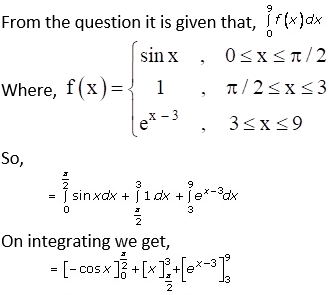
Then, applying limits, we get,
= [- cos (π/2) + cos 0] + [3 – (π/2)] + [e9 – 3 – e3 – 3]
= [0 + 1] + [3 – (π/2)] + [e6 – e0]
= 0 + 1 + 3 – (π/2) + e6 – e0
= 1 + 3 – (π/2) + e6 – 1
= 3 – π/2 + e6
Question. 1(iii)
Solution:
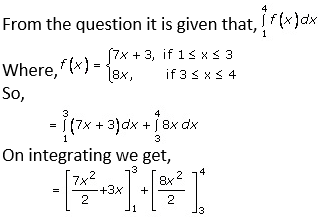
Then, applying limits, we get,
= [(((7 × 9)/2) + (3 × 3)) – (((7 × 1)/2) + (3 × 1))] + [(((8 × 16)/2) – ((8 × 9)/2))]
= [(63/2) + 9 – (7/2) – 3] + [64 – 36]
= 34 + 28
= 62
Question. 2
Solution:
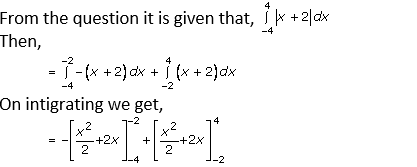
Now, applying limits,
= – [((4/2) – 4) – ((16/2) – 8)] + [((16/2) + 8) – ((4/2) – 4)]
= – [(2 – 4) – (8 – 8)] + [(8 + 8) – (2 – 4)]
= – [- 2 – 0] + [16 – (- 2)]
= – [-2] + [16 + 2]
= 2 + 18
= 20

Question. 3
Solution:
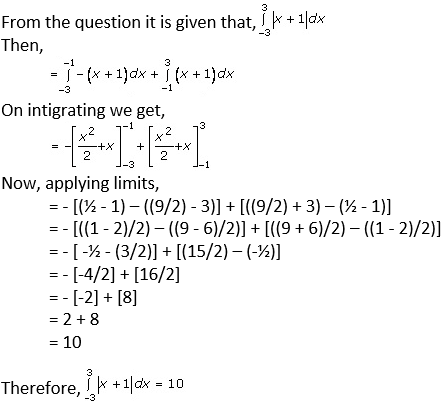
Question. 4
Solution:
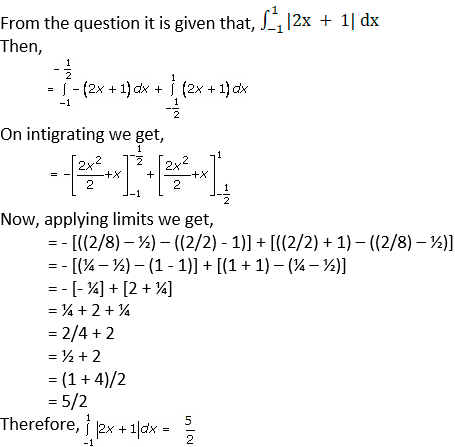
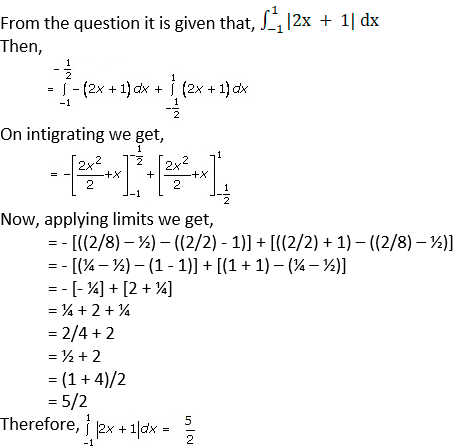
Question. 5
Solution:
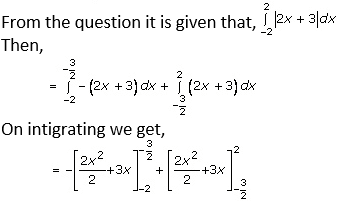
Now, applying limits we get,
= – [((18/8) – (9/2)) – ((8/2) – 6)] + [((8/2) + 6) – ((18/8) – (9/2))]
= – [((9/4) – (9/2)) – ((4/1) – 6)] + [((4/1) + 6) – ((9/4) – (9/2))]
= – [((9/4) – (9/2)) – (- 2)] + [(10) + (9/4)]
= – [(- 9/4) + 2] + [10 + (9/4)]
= 9/4 – 2 + 10 + 9/4
= 18/4 + 8
= 9/2 + 8
= (9 + 16)/2
= 25/2
Access RD Sharma Solutions for Class 12 Maths Chapter 20 Exercise 4
EXERCISE 20.4
Question. 1
Solution:
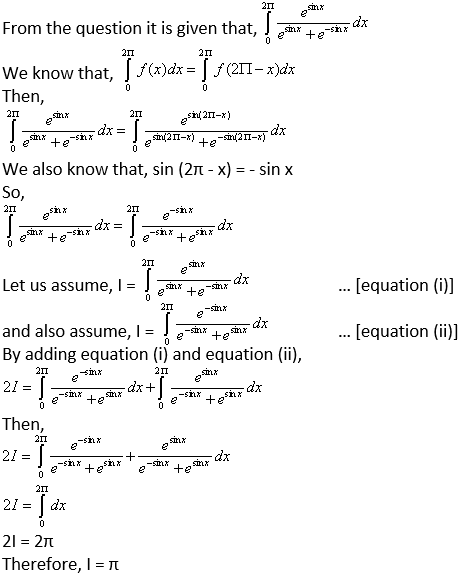
Question. 2
Solution:
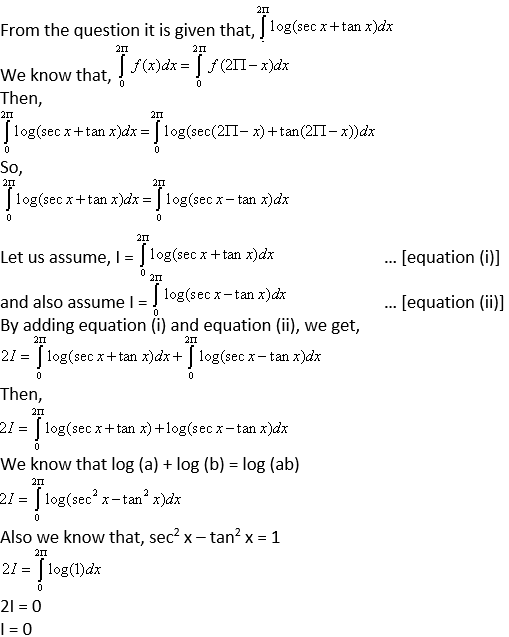
Question. 3
Solution:

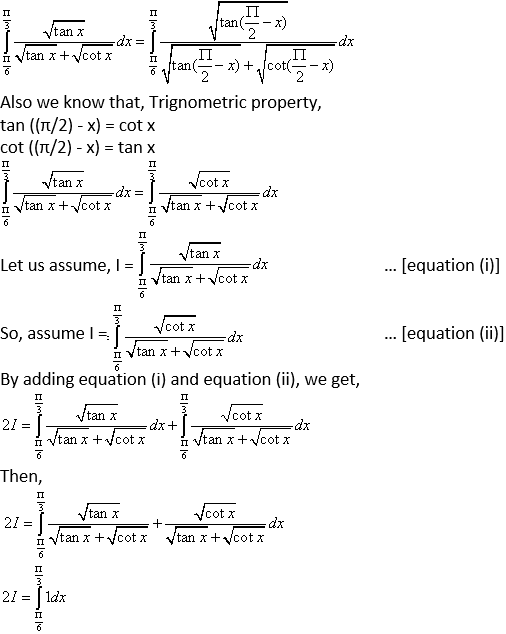
Now applying limits, we get,
2I = π/3 – π/6
2I = (2π – π)/6
2I = π/6
I = π/12
Question. 4
Solution:
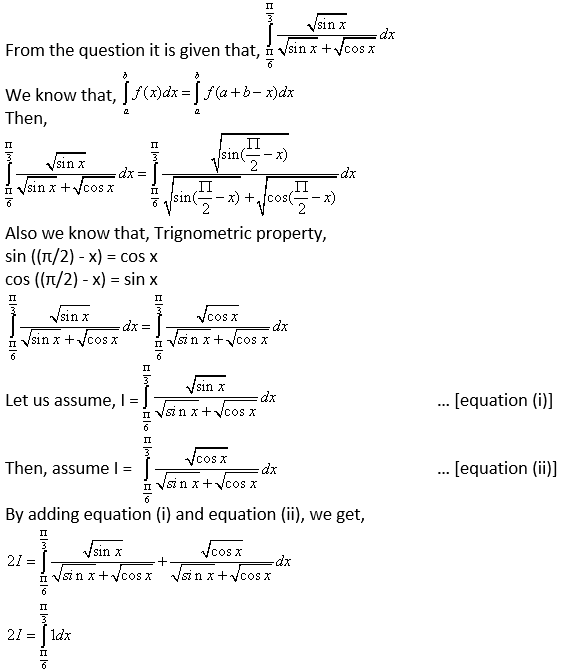
Now applying limits, we get,
2I = π/3 – π/6
2I = (2π – π)/6
2I = π/6
I = π/12
Question. 6
Solution:
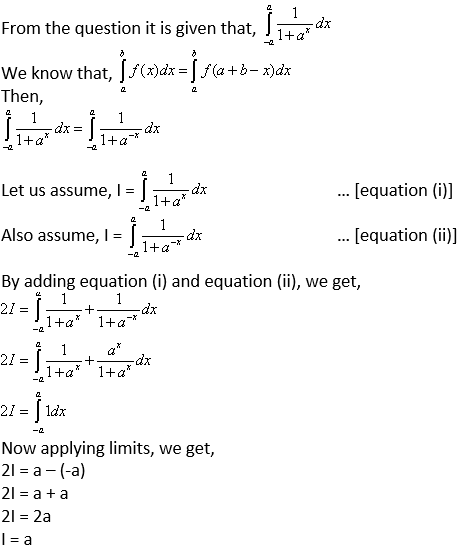
Access RD Sharma Solutions for Class 12 Maths Chapter 20 Exercise 5
EXERCISE 20.5
Question. 1
Solution:
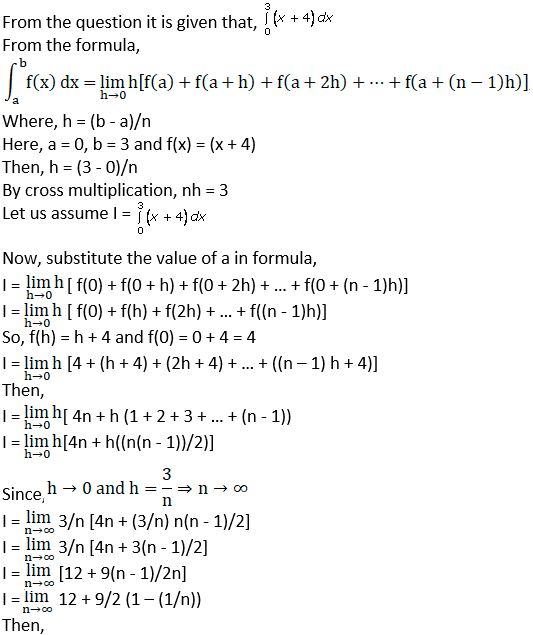
I = 12 + 9/2 (1 – 1/∞)
I = 12 + (9/2) (1 – 0)
I = 12 + (9/2)
I = (24 + 9)/2
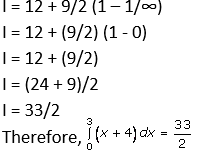
Question. 2
Solution:
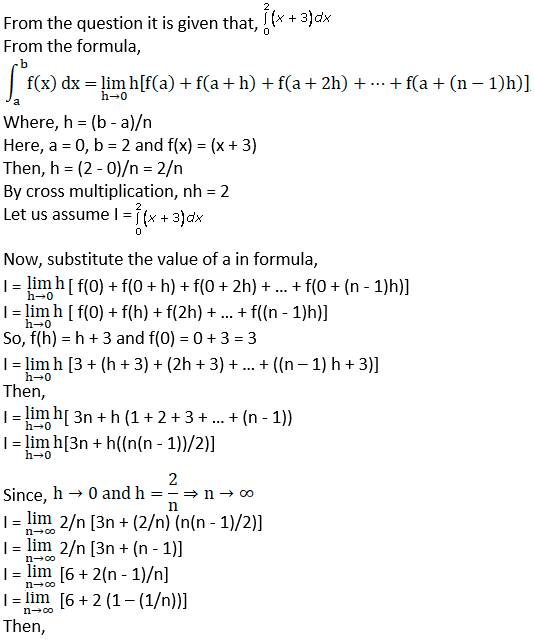
I = 6 + 2 (1 – 1/∞)
I = 6 + 2 (1 – 0)
I = 6 + 2

Question. 3
Solution:
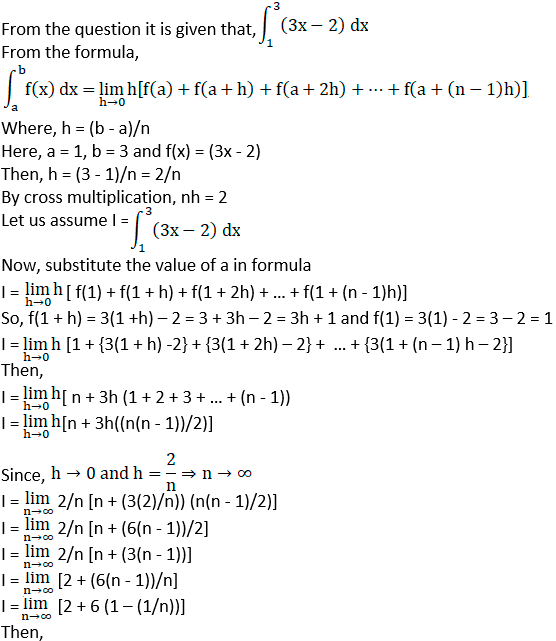
I = 2 + 6 (1 – 1/∞)
I = 2 + 6 (1 – 0)
I = 2 + 6

Question. 4
Solution:
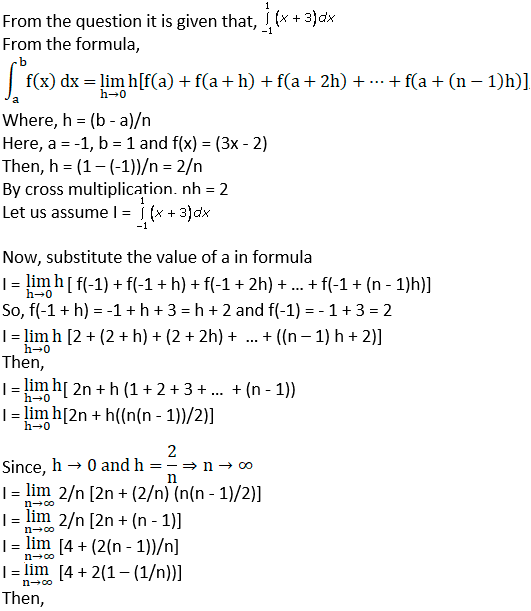
I = 4 + 2 (1 – 1/∞)
I = 4 + 2 (1 – 0)
I = 4 + 2

Question. 5
Solution:
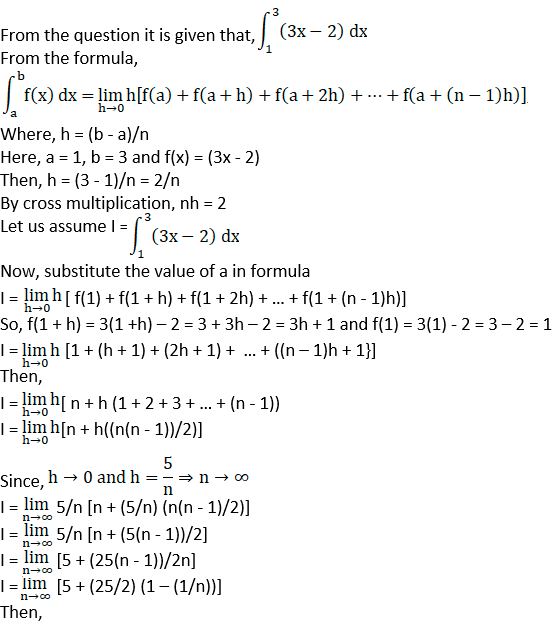
I = 5 + (25/2) (1 – 1/∞)
I = 5 + (25/2) (1 – 0)
I = 5 + 25/2
